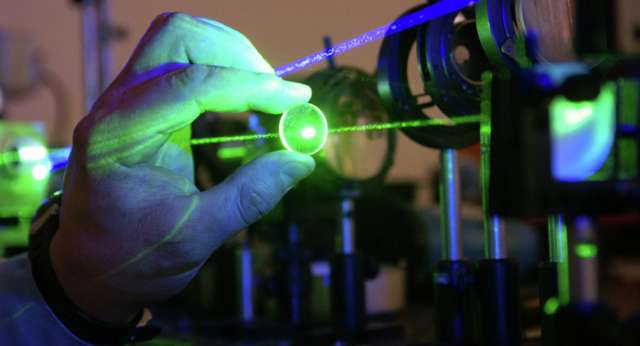Boeing has developed a working laser cannon specifically designed to take down wayward UAVs.
Now General Atomics Aeronautical Systems, the company behind the US military’s most lethal drones, plans to take the technology to the next level…er, altitude. GA-ASI plans to equip its Predator upgrade with an energy-based weapons system.
"We’re funded right now to develop a laser module compatible with the aircraft and study putting it on the Avenger," Michael Perry, Vice President for Mission Systems at General Atomics, told Defense One. "We hope to be funded to that."
The company has already developed its own laser, as well as a prototype power system for an airborne model. In theory, the drone laser could fire five or six shots before needing to recharge, but that would take place while the UAV was still airborne.
"If there’s enough time between shots you never have to recharge at all," Perry said. "It depends on how much time you have to retarget."
The Aero-adaptive Aero-optic Beam Control turret that Lockheed Martin is developing for the Defense Advanced Research Projects Agency and the Air Force Research Laboratory has completed initial flight testing.
But while that current model may be strong enough to bring down aircraft, it’s not exactly ready to be attached to one. Firing a laser from a moving vehicle is much more complicated than firing from a stationary position.
"Before you spend any money on a laser you better darn well show that you can acquire, ID, and track the objects of interest so that you could put a laser on them," Perry said. "You have to be able to compensate for aero-optic distortion."
Then there’s the weight problem. While laser weapons offer a number of advantages – most notably, an ammunition supply limited only by the system’s access to a power supply – they’re not light. The hardware required to turn a beam of light into a focused killing machine tends to weigh more than the Predator MQ-1’s 500 pound payload.
Still, GA-ASI says they’ve been developing high-energy laser systems for 15 years, and with that much research conducted, the challenges could all be solved by 2017.
While General Atomic is currently funding the project itself, the Pentagon will likely keep a keen eye on the development. Last month, the US Missile Defense Agency announced it was working on a laser drone capable of shooting down ballistic missiles.
"MDA’s concept would take two maturing military technologies – unmanned systems and directed energy – and combine them to create a new weapon system that takes advantage of the attributes of both."
More about:
















































